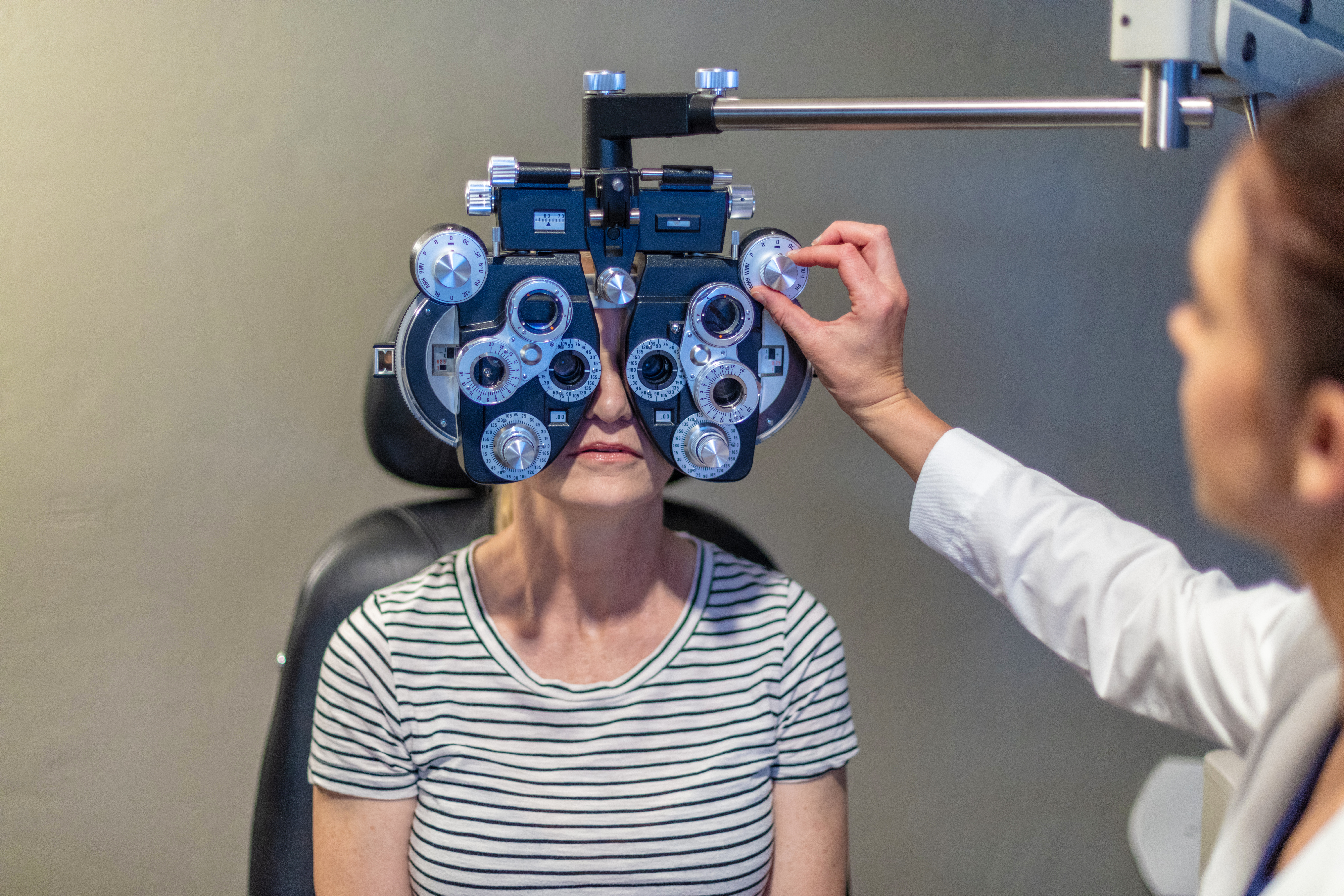General Ophthalmology
What is a comprehensive eye examination?
Regular eye examinations are important in maintaining eye health. During a comprehensive eye examination, eye diseases or other abnormalities that are not yet causing symptoms can be detected. Early intervention is crucial in preventing vision loss from a disease such as glaucoma, which may not cause symptoms until significant and irreversible damage has taken place. Early detection of eye problems gives a patient a choice of treatment options and reduces the risk of permanent damage.
What are the benefits of a comprehensive eye examination?
A comprehensive eye exam should be performed once every year. Children should have regular tests to ensure that their vision is normal so that their schoolwork does not suffer. Older adults are at higher risk for eye conditions such as glaucoma, macular degeneration and cataracts. During a comprehensive eye examination, simple refractive errors are detected, and serious eye problems or diseases, including the following, are diagnosed:
- Glaucoma
- Diabetes
- Macular Degeneration
- Thinning of the peripheral retina
Even in younger, healthy adults who are asymptomatic, a regular eye examination is essential. Serious medical conditions, such as high cholesterol, diabetes, and high blood pressure, can be detected, allowing patients to seek treatment early.
Many other health conditions may first present with eye findings which is why eye exams are an essential and important component of maintaining overall health.
What can be expected from the comprehensive eye examination procedure?
In order to evaluate the eyes thoroughly and detect any problems, the following tests may be performed:
- Visual acuity
- Refraction
- Slit lamp examination
- Test of intraocular pressure
- Glaucoma screening
- Retina examination
What are the possible treatments associated with a comprehensive eye examination?
Based on the diagnostic findings of the examination, eyeglasses or contact lenses, medication for infection or inflammation, and vitamins or other supplements may be recommended. In some cases, eye surgery may be necessary.
What are some eye conditions that can be diagnosed during a comprehensive eye examination?
The most common eye conditions diagnosed during a comprehensive eye exam involve refractive errors that cause blurry vision. These conditions affect millions of people in the United States, and often get progressively worse as patients age. Refractive errors are easily treated.
Myopia
Also known as nearsightedness or shortsightedness, myopia is a condition of the eyes in which nearby objects are clear, and distant objects are blurry. Almost a third of people in the United States have some degree of nearsightedness.
Hyperopia
Also known as farsightedness, hyperopia is a condition of the eyes in which the focus on distant objects is better than the focus on objects closer to the eye, making nearby objects appear blurry. The eye is designed to focus images directly on the surface of the retina; with hyperopia, light rays focus behind the surface of the retina, producing a blurry image.
Astigmatism
Astigmatism occurs when curvature of the eye is irregular. There are two types of astigmatism: corneal, in which the shape of the cornea (the clear covering of the eye) is irregular, and lenticular, due to the shape of the lens. Corneal astigmatism is more common. Astigmatism can result in blurred vision at any distance.
Presbyopia
Presbyopia, meaning "old eye," is a condition in which the eyes lose their ability to focus on close objects. It is considered a normal part of the aging process. Symptoms typically begin when patients are between 40 and 45 years old.
All of these vision conditions can be effectively treated with either eyeglasses or contact lenses. Corrective lenses may need to be used only during certain activities, such as reading, watching television or driving, or may always be needed.
Comprehensive eye examinations are essential in checking for vision problems, eye diseases, refractive errors, and overall health. How frequently the eyes should be examined is based on the patient's age and specific circumstances.


